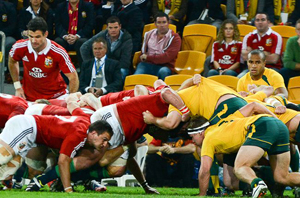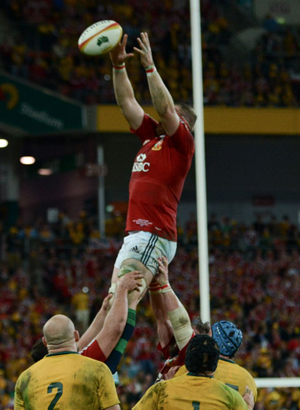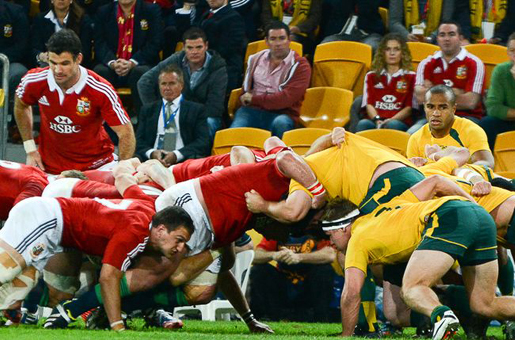
At the start of the Lions tour I was expecting the Lions to have an advantage in the set piece contest against the Wallabies, particularly at scrum time.
With the loss of both Cian Healy and Gethin Jenkins the Lions selected their loosehead prop for the first test from either Mako Vunipola who started the tour as the third choice or Alex Corbisiero who wasn’t even selected in the original touring party. They chose to go with Corbisiero because he’s considered a better scrummager that Vunipola. That still meant the Lions were going into the test with their third choice at loosehead which reduced the threat for the Wallabies even though the Lions still had Adam Jones at tighthead.
The Wallabies scrum held up really well in all except one scrum in the match and in the second half the Wallabies were actually the dominant scrum once the Lions replaced their starting props. When you watch the video you’ll see that both Dan Cole and Vunipola were dominated by the Wallabies. With Corbisiero out for the second test we’ll probably see Vunipola starting and that presents a good opportunity for the Wallabies at scrum time.
The Wallabies won all of their own scrums whilst the Lions lost three of theirs – one for engaging early, one a clean tighthead for the Wallabies and the final scrum of the match where they were penalised.
You would have seen Benn Robinson getting very agitated in the second half when he was penalised for going to ground where he claimed Adam Jones had actually rolled his shoulder to bring Robinson down. When you watch the video it’s obvious that Jones got away with one in that scrum but you’ll also see that James Slipper got away with one later too.
Both teams won all of their lineouts and it was a good performance from the Wallabies on their own throw. However, I was disappointed with the Wallabies performance in defending against the Lions lineout throw. Or I should say, not defending, because in the first half the Wallabies only contested two of the Lions eight lineout throws and only one of those was an effective challenge. In the second half the Wallabies improved their defensive work and competed on three of four throws by the Lions.
The Wallabies made a conscious decision in the match to focus their lineout defence on the middle and rear of the lineout, giving the Lions the front of the lineout unopposed, if they wanted it.

Why would any team offer the opposition an uncontested win at the front of the lineout? If you win the ball at the front of the lineout the opposition defenders at the rear of the lineout aren’t jumping and so are in position to start their run into the backline that little bit earlier. This combined with the extra time it takes the halfback to pass the ball from the front of the lineout to the #10 means that any attempt to play wide off a lineout is impaired by having the extra forward defenders reducing the space available for your backs to attack and increasing the risk that the opposition backrow can get to the first breakdown and force a turnover.
In Super Rugby earlier this year we saw the Brumbies give the Rebels the front of the lineout and that took away the Rebels ability to attack wide which they had shown was what they wanted to do in that match, so it can be an effective tactic if you force the opposition to change their attack plans.
However, if the team you’re defending against isn’t intending to play in the wide channels from first phase they don’t need to win the ball in the middle or at the back of the lineout and are quite happy with front ball. If that’s the case, giving the opposition the front of the lineout is just giving them easy lineout wins and has no effect on their attack plans.
We saw last week how the Brumbies attacked the Lions lineouts and disrupted their attack but also took ball away from them at source denying them the opportunity to attack at all.
As the video below shows not only did the Wallabies tactic of giving the Lions the front of the lineout give them easy ball, it made no impact on how the Lions attacked. In fact when the Lions wanted to win ball at the middle or back of the lineout, they did exactly that, often without any competition from the Wallabies.
Yes, attacking into the #12 channel can benefit from ball delivered from the back of the lineout and off the top but you can still comfortably attack in that channel from front ball delivered cleanly off the top as was shown in this match. If the opposition contest the front throw and it’s delivered under pressure to the halfback then even attacking in the #12 channel is made harder.
I think this is an area the Wallabies need to make changes to their tactics in for the second test to increase pressure on the Lions. We know the Lions start many of their backline attacks with a punch in the #12 channel so let’s try and disrupt their ball at source like the Brumbies did.
Photos by Shane Sullivan.


